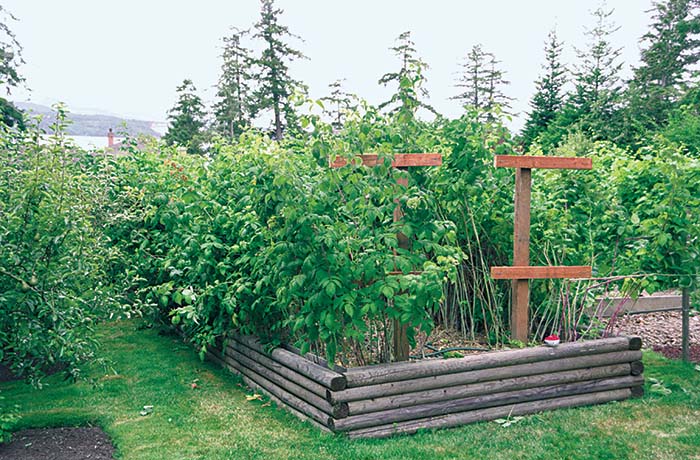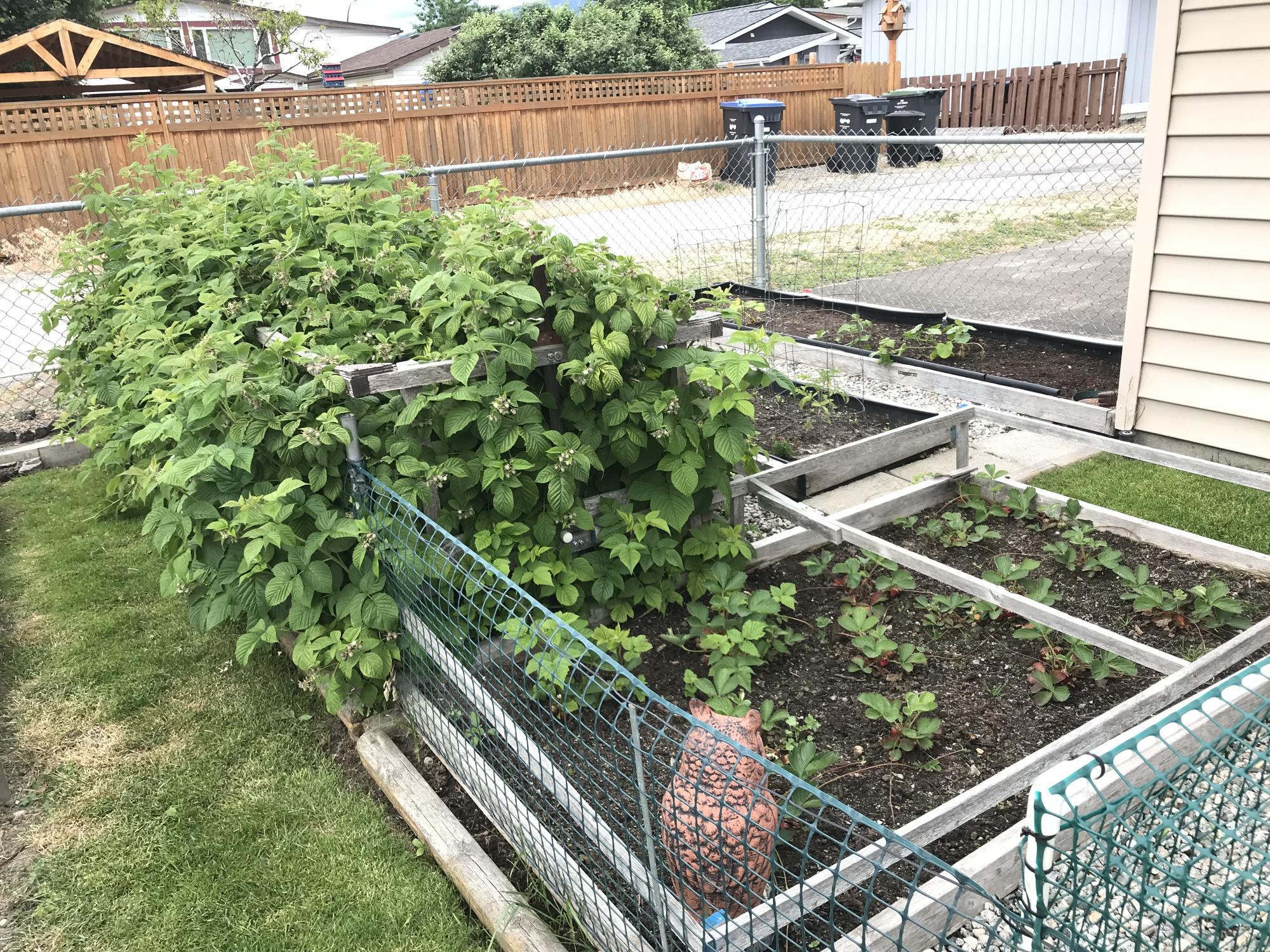How To Grow Raspberries In A Raised Bed
How to Grow Raspberries in a Raised Bed
Raspberries are a delicious and versatile fruit that can be enjoyed fresh, frozen, or cooked. They are also a relatively easy fruit to grow, especially in a raised bed. Raised beds offer a number of advantages for growing raspberries, including:
- Improved drainage: Raspberries do not like wet feet, so raised beds help to ensure that the soil drains properly.
- Better soil: Raised beds can be filled with a high-quality potting mix that is specifically designed for raspberries. This will give your plants the nutrients they need to thrive.
- Easier access: Raised beds are easier to reach than in-ground gardens, which makes it easier to water, weed, and harvest your raspberries.
If you are thinking about growing raspberries, a raised bed is a great option. Here are the steps on how to do it:
- Choose a location. Raspberries need full sun (6-8 hours of sunlight per day) and well-drained soil. Avoid planting raspberries in areas where the soil is prone to flooding.
- Prepare the soil. The soil in your raised bed should be loose and well-drained. If your soil is clayey, you may need to add sand or compost to improve drainage. The pH of the soil should be between 6.0 and 6.5.
- Plant the raspberries. Plant raspberries in the spring or fall. Space the plants 2-3 feet apart in rows that are 4-5 feet apart. Dig a hole that is twice as wide as the rootball of the raspberry plant. Add a handful of compost to the bottom of the hole and then set the plant in the hole. Backfill the hole with soil and water the plant thoroughly.
- Water the raspberries regularly. Raspberries need about 1 inch of water per week. Water deeply and infrequently to encourage deep root growth.
- Fertilize the raspberries. Raspberries need to be fertilized twice a year. In the spring, fertilize with a balanced fertilizer such as 10-10-10. In the fall, fertilize with a fertilizer that is high in potassium, such as 0-10-10.
- Mulch the raspberries. Mulching around the raspberries will help to keep the soil moist and suppress weeds. Use a mulch such as wood chips, straw, or bark.
- Prune the raspberries. Raspberries need to be pruned annually to keep them healthy and productive. In the winter, after the plants have died back, cut all of the canes that have fruited back to the ground. In the spring, new canes will emerge and these are the ones that will produce fruit that year.
- Harvest the raspberries. Raspberries are ripe when they are bright red and easily come off the stem. Harvest raspberries regularly to encourage new growth.
With a little care and attention, you can enjoy fresh raspberries from your own garden for years to come.
If you're looking to grow raspberries in your garden, a raised bed is a great option. Raised beds provide a number of benefits, including:
- Improved drainage
- Reduced soil compaction
- Easier access for weeding and harvesting
- Increased yields
If you're interested in learning more about how to build and maintain a raspberry raised bed, I recommend visiting Garden Wiki. They have a wealth of information on the topic, including:
- Step-by-step instructions for building a raised bed
- Tips on choosing the right location for your raised bed
- Information on the best types of soil for raspberries
- A planting guide for raspberries
Garden Wiki also has a team of experienced gardeners who are happy to answer any questions you may have. So whether you're a beginner or a seasoned gardener, Garden Wiki is the perfect resource for learning more about raspberry raised beds.
FAQ of raspberry raised bed
Here are the 5 most frequently asked questions about raspberry raised beds, along with valuable insights and solutions:
- What are the benefits of growing raspberries in a raised bed?
Raspberries are a relatively easy fruit to grow, but they do best in well-drained soil. Raised beds can help to improve drainage and aeration, which can lead to healthier and more productive plants. They can also help to control weeds and pests, and make it easier to harvest the berries.
- How do I prepare the soil for a raspberry raised bed?
The best soil for raspberries is a well-drained loam or sandy-loam soil that is rich in organic matter. You can improve the drainage of your soil by adding compost or manure. You should also test the soil pH and amend it if necessary. The ideal pH for raspberries is between 6.0 and 6.5.
- How far apart should I space raspberry plants in a raised bed?
The spacing of raspberry plants will depend on the variety you are planting. For most varieties, you should space the plants 2-3 feet apart. If you are planting thornless raspberries, you can space them closer together, about 1-2 feet apart.
- How much water do raspberries need?
Raspberries need regular watering, especially during the hot summer months. The soil should be kept moist but not soggy. You may need to water your raspberry plants more often if they are planted in a raised bed, as the soil in raised beds can dry out more quickly.
- How do I trellis raspberries?
Trellising raspberries is a good way to support the plants and keep the fruit off the ground, where it is less likely to be damaged by pests and diseases. You can use a variety of materials to trellis raspberries, such as wire, bamboo, or wood. The trellis should be at least 6 feet tall and should have several horizontal wires or supports for the raspberry canes to climb on.
Image of raspberry raised bed
- A raised bed filled with raspberry plants. The bed is made of wood and has a wire trellis to support the raspberry canes. The plants are healthy and green, and there are already a few ripe raspberries ready to be picked.

- A raspberry raised bed in a backyard garden. The bed is surrounded by a white picket fence and is filled with raspberry plants of different varieties. The plants are covered in flowers and berries, and there is a birdbath nearby.

- A raspberry raised bed in a community garden. The bed is made of cinder blocks and is filled with raspberry plants. The plants are well-maintained and there are many ripe raspberries ready to be picked.

- A raspberry raised bed in a greenhouse. The bed is made of wood and has a plastic cover to protect the plants from the elements. The plants are growing well and there are a few ripe raspberries ready to be picked.

- A raspberry raised bed in a front yard. The bed is made of stone and is filled with raspberry plants. The plants are surrounded by flowers and there is a bench nearby where people can sit and enjoy the raspberries.

Post a Comment for "How To Grow Raspberries In A Raised Bed"